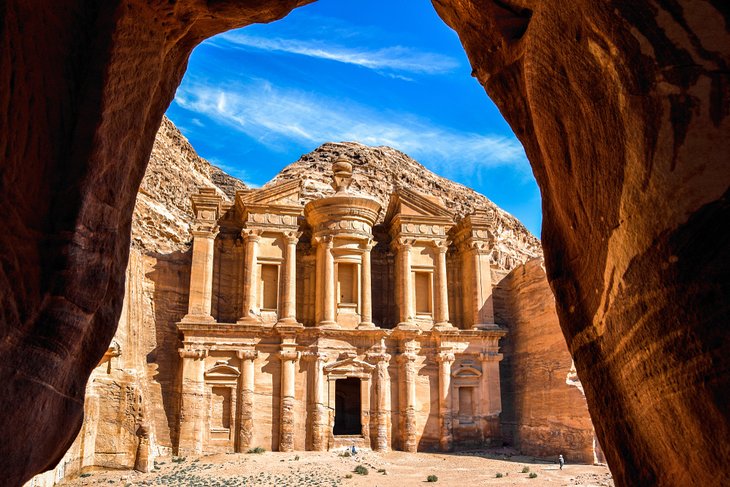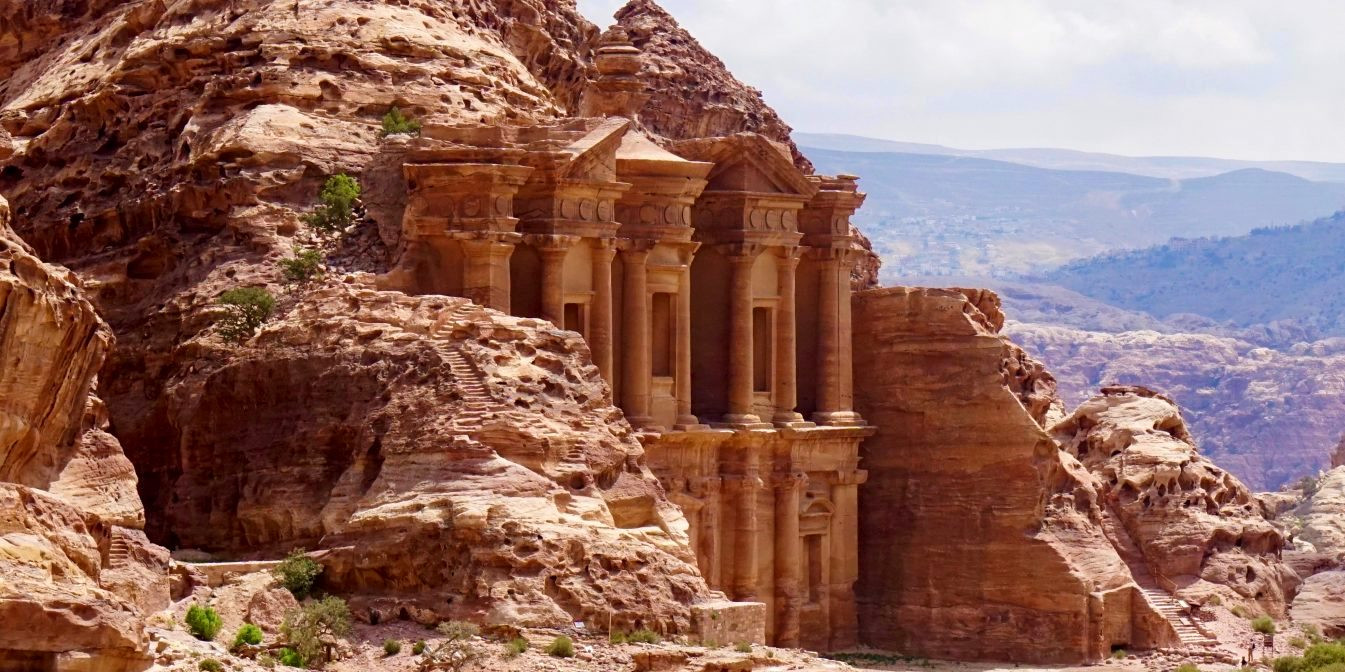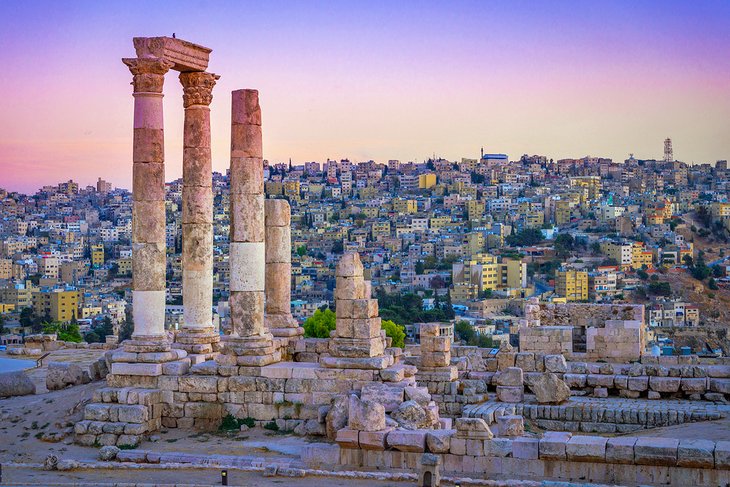
Jordan, a land steeped in history and breathtaking natural beauty, offers an unparalleled travel experience. Nestled at the crossroads of ancient civilizations, this Hashemite Kingdom invites visitors to trace the footsteps of prophets, emperors, and desert nomads. From the iconic rose-red city of Petra to the surreal landscapes of Wadi Rum, the therapeutic waters of the Dead Sea, and the vibrant pulse of Amman, Jordan is a country that captivates the soul and ignites the imagination.
This article delves into the top attractions that define Jordan’s allure, provides a glimpse into its rich historical tapestry, offers essential travel tips, explores accommodation and transportation options, and guides you on the best time to embark on this unforgettable adventure.
Top Attractions: Unveiling Jordan’s Crown Jewels

Related Articles about Jordan: A Journey Through Ancient Wonders and Desert Dreams:
- Beyond the Tulips and Windmills: A Comprehensive Guide to Experiencing the Netherlands
- The Enchanting Emerald Isle of Europe: A Comprehensive Travel Guide to the Czech Republic
- Castles, Cobblestones, and Comfort: Unveiling the Best Hotels in the Czech Republic
- Florence: A Traveler’s Guide to the Jewel of the Renaissance
- Toronto: A Vibrant Tapestry of Culture, History, and Urban Adventure
Jordan’s diverse landscapes and millennia of human habitation have bequeathed it a treasure trove of sites, each telling a unique story.
1. Petra: The Rose City, a Wonder of the World
Undoubtedly Jordan’s most famous and awe-inspiring attraction, Petra is a UNESCO World Heritage site and one of the New7Wonders of the World. This ancient Nabataean city, carved directly into vibrant sandstone cliffs, remained hidden from the Western world for centuries. The journey begins with the Siq, a narrow, winding canyon that dramatically opens up to reveal Al-Khazneh (The Treasury), Petra’s most iconic and intricately carved façade. Beyond the Treasury, a vast city unfolds, inviting exploration of the Street of Facades, the Royal Tombs, the Roman-style theatre, and countless other rock-cut dwellings and temples. For the more adventurous, a hike up to Ad Deir (The Monastery) offers equally stunning architecture and panoramic views of the surrounding mountains. Petra demands at least a full day, if not two, to truly appreciate its scale and grandeur, with the Petra by Night show offering a magical, candlelit experience.
2. Wadi Rum: The Valley of the Moon
A UNESCO World Heritage site and a landscape unlike any other, Wadi Rum is a vast, silent desert wilderness of dramatic sandstone mountains, towering rock formations, and sweeping red dunes. Famed as the setting for "Lawrence of Arabia," this "Valley of the Moon" offers a profound sense of solitude and natural beauty. Visitors can explore its wonders on exhilarating jeep tours, ride camels across the sands, or hike through its canyons. The experience is often capped with an overnight stay in a traditional Bedouin camp, where guests enjoy authentic hospitality, delicious food, and the unparalleled spectacle of a starlit desert sky. Wadi Rum is not just a destination; it’s an immersion into Bedouin culture and a profound connection with nature.
3. The Dead Sea: The Lowest Point on Earth
Floating effortlessly in the hypersaline waters of the Dead Sea is a quintessential Jordanian experience. At over 400 meters below sea level, it’s the lowest point on Earth and renowned for its therapeutic mineral-rich mud and unique buoyancy. Luxury resorts line the eastern shore, offering private beach access, spa treatments, and opportunities to slather oneself in the rejuvenating mud. Beyond the novelty of floating, the Dead Sea region provides stunning views of the Judean Hills and a sense of profound tranquility.
4. Amman: The Bustling Capital
Jordan’s vibrant capital, Amman, is a fascinating blend of ancient history and modern dynamism. Spread across several hills, the city offers a captivating contrast between its historic core and its contemporary districts. The Citadel (Jabal Al-Qal’a), perched atop one of the highest hills, boasts ruins from Roman, Byzantine, and Umayyad periods, including the Temple of Hercules and the Umayyad Palace, offering panoramic views of the city. Below the Citadel lies the impressive Roman Theatre, a beautifully preserved amphitheater still used for cultural events. Explore the bustling souks for traditional crafts and spices, stroll down the trendy Rainbow Street for cafes and art galleries, and delve into the city’s rich past at the Jordan Museum. Amman serves as an excellent base for exploring the northern parts of the country.

5. Jerash: The Best-Preserved Roman City
Just an hour’s drive north of Amman lies Jerash, one of the most spectacular and best-preserved Roman provincial towns in the world. Often called the "Pompeii of the Middle East" (without the volcanic ash), its grandeur is astounding. Visitors walk through Hadrian’s Arch, marvel at the vast Oval Plaza, stroll down the colonnaded Cardo Maximus with its ancient chariot ruts, and explore the majestic Temples of Artemis and Zeus. The two Roman theatres, the Hippodrome, and numerous churches and fountains paint a vivid picture of life in a prosperous Roman city. Jerash offers a truly immersive journey back in time.
6. Mount Nebo: A Biblical Vista
Holding immense biblical significance, Mount Nebo is believed to be the spot where Moses gazed upon the Promised Land before his death. From its summit, visitors can enjoy breathtaking panoramic views across the Jordan Valley, the Dead Sea, Jericho, and even Jerusalem on a clear day. The modern Franciscan church at the site houses remarkable Byzantine mosaics, including the intricate "Map of the Holy Land," and an outdoor serpentine cross sculpture symbolizing the bronze serpent taken by Moses.
7. Madaba: The City of Mosaics
South of Amman, Madaba is renowned for its exquisite Byzantine and Umayyad mosaics. The most famous is the 6th-century mosaic map of the Holy Land, housed in the Greek Orthodox Church of St. George. This incredible artwork depicts hills and valleys, villages and towns as far away as the Nile Delta. The Madaba Archaeological Park and Museum also showcase a wealth of other stunning mosaics from various periods, providing a deep dive into the region’s artistic heritage.
8. Aqaba: Jordan’s Red Sea Gateway
Jordan’s only coastal city, Aqaba, offers a refreshing contrast to the desert and ancient ruins. Located on the Red Sea, it’s a bustling port city known for its beautiful coral reefs and vibrant marine life. It’s a prime destination for snorkeling, diving, and other water sports. The Aqaba Fort, a historic Mamluk fortress, and the Aqaba Archaeological Museum offer glimpses into the city’s past, while its duty-free status makes it a popular shopping destination.
9. Bethany Beyond the Jordan (Al-Maghtas): A Sacred Site
Recognized by UNESCO as a World Heritage site, Al-Maghtas is the traditional site of Jesus’s baptism by John the Baptist. Located on the east bank of the Jordan River, it is a significant pilgrimage destination for Christians worldwide. The archaeological excavations have revealed churches, caves, and baptismal pools dating back to the Roman and Byzantine periods, making it a place of profound spiritual resonance.
A Tapestry of History: Jordan’s Enduring Legacy
Jordan’s history is as rich and layered as its landscapes. Evidence of human habitation dates back to the Stone Age, but it truly began to flourish with the emergence of powerful ancient kingdoms. The land was home to biblical peoples like the Moabites, Edomites, and Ammonites. The Nabataeans, a sophisticated Arab people, established their remarkable capital at Petra around the 4th century BC, controlling vital trade routes.
The region then fell under Roman rule, becoming part of the Decapolis, with cities like Jerash (Gerasa) flourishing as grand centers of commerce and culture. The Byzantine era saw the spread of Christianity and the creation of magnificent mosaics. Following the rise of Islam, Jordan became part of the rapidly expanding Islamic Caliphate, with successive dynasties like the Umayyads, Abbasids, and Ottomans leaving their mark.
In the early 20th century, Jordan played a pivotal role in the Great Arab Revolt against Ottoman rule, famously aided by Lawrence of Arabia. This led to the establishment of the Emirate of Transjordan in 1921, which gained full independence in 1946 as the Hashemite Kingdom of Jordan. This rich, continuous history is palpable throughout the country, where ancient ruins stand testament to the ebb and flow of empires and cultures.
Practical Travel Tips for a Seamless Journey
To ensure a smooth and enjoyable trip, keep these practical tips in mind:
- Visa & Jordan Pass: Many nationalities can obtain a visa on arrival at Queen Alia International Airport (Amman). Consider purchasing the Jordan Pass before your trip. It waives the visa fee (for stays of 3 nights or more) and includes entry to over 40 attractions, including Petra and Jerash, offering significant cost savings.
- Currency: The local currency is the Jordanian Dinar (JOD), often referred to as "JD." ATMs are widely available in cities and major tourist areas. Credit cards are accepted in most hotels and larger establishments.
- Language: Arabic is the official language. English is widely spoken in tourist areas, hotels, and by most tour guides. Learning a few basic Arabic phrases (e.g., "marhaba" for hello, "shukran" for thank you) is always appreciated.
- Culture & Etiquette: Jordan is a conservative Muslim country, though generally welcoming and tolerant. Dress modestly, especially when visiting religious sites or outside modern Amman. Shoulders and knees should be covered. Public displays of affection are generally frowned upon.
- Safety: Jordan is a very safe country for tourists. Jordanians are renowned for their hospitality. Exercise common sense, be aware of your surroundings, and respect local customs.
- Water: Drink bottled water only.
- Sun Protection: The sun can be intense, especially in the desert and during summer. Always wear a hat, sunglasses, and high-SPF sunscreen.
- Tipping: Tipping is customary for good service. For restaurant staff, 10% is standard. For tour guides and drivers, JOD 5-10 per day is appropriate, depending on the service.
- Connectivity: Local SIM cards are affordable and readily available at the airport or mobile provider stores. Wi-Fi is common in hotels and cafes.
Accommodation Options: From Bedouin Camps to Luxury Resorts
Jordan offers a wide range of accommodation to suit every budget and travel style:
- Luxury Hotels: Major cities like Amman and Aqaba, as well as the Dead Sea region, boast international hotel chains and high-end boutique hotels offering world-class amenities and service.
- Mid-Range Hotels: Good quality, comfortable hotels are available in most cities and tourist hubs like Wadi Musa (Petra) and Madaba, providing excellent value.
- Budget Hostels & Guesthouses: Common in Amman, Wadi Musa, and Aqaba, these options are perfect for solo travelers or those on a tight budget, often offering a friendly, communal atmosphere.
- Desert Camps (Wadi Rum): A highlight of any Jordanian trip, these camps range from basic Bedouin tents with shared facilities to luxurious "glamping" experiences with private bathrooms and air conditioning. All offer an unforgettable opportunity to sleep under the stars.
- Dead Sea Resorts: These resorts focus on wellness and relaxation, providing direct access to the Dead Sea, spa facilities, and multiple pools.
- Boutique Hotels: In areas like Amman’s historic Jabal Weibdeh, charming boutique hotels offer unique character and personalized service.
Getting Around Jordan: Navigating the Kingdom
Exploring Jordan is relatively straightforward, with several transportation options:
- Rental Cars: Renting a car offers the most flexibility for independent travelers, allowing you to explore at your own pace. Roads are generally well-maintained, but navigating busy city centers can be challenging. An International Driving Permit is recommended.
- Taxis: Readily available in cities. Always insist on the meter or agree on a fare before starting your journey. Ride-hailing apps like Careem and Uber operate in Amman.
- Private Drivers: A popular and convenient option for tourists, especially for multi-day tours. Drivers can be arranged through hotels or local tour operators. They offer comfort, local insights, and often speak English.
- JETT Buses: JETT offers reliable, comfortable, air-conditioned coach services connecting major cities and tourist destinations (e.g., Amman to Petra, Amman to Aqaba, Amman to Dead Sea). Booking in advance is advisable.
- Local Buses/Minibuses: While cheaper, these are less frequent, often crowded, and do not always follow fixed schedules or routes, making them less practical for tourists.
- Internal Flights: Royal Jordanian operates daily flights between Amman (Queen Alia International Airport) and Aqaba (King Hussein International Airport), useful for saving time on the long drive south.
Best Time to Visit: Weathering the Seasons
Choosing the right time to visit Jordan can significantly enhance your experience:
- Spring (March to May): This is arguably the best time to visit. Temperatures are mild and pleasant, ideal for exploring ancient sites and hiking. The countryside, especially in the north, is lush and dotted with wildflowers.
- Autumn (September to November): Another excellent period, with warm days and comfortably cool evenings. Similar to spring, it offers ideal conditions for outdoor activities and sightseeing.
- Summer (June to August): Summers are very hot, particularly in the desert (Wadi Rum, Petra) and the Jordan Valley (Dead Sea). While Aqaba is popular for beach and diving activities, sightseeing in other areas can be challenging due to the heat. However, crowds are generally smaller.
- Winter (December to February): Winters are cool, and sometimes cold, especially in Amman and the mountainous regions, where occasional snow is possible. Petra and Wadi Rum can be chilly. While there are fewer tourists, be prepared for rain and cooler temperatures.
Jordan is a country that leaves an indelible mark on every visitor. Its ancient wonders, dramatic landscapes, and the warmth of its people create an unforgettable journey through time and nature. Whether you’re floating in the Dead Sea, exploring the hidden passages of Petra, or gazing at the starlit sky in Wadi Rum, Jordan promises an adventure that will resonate long after you’ve returned home.





